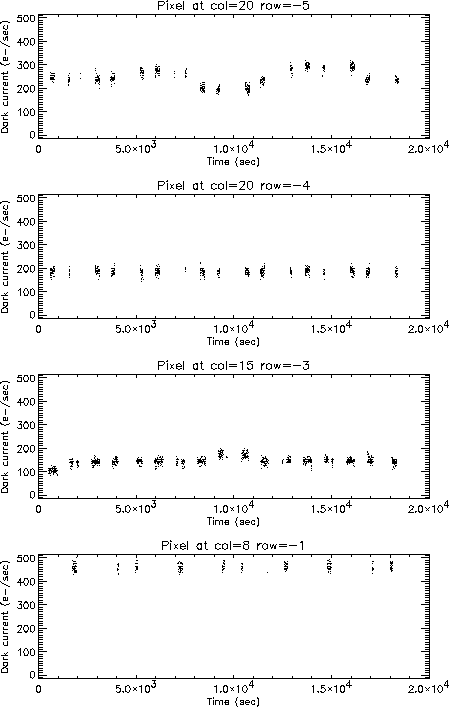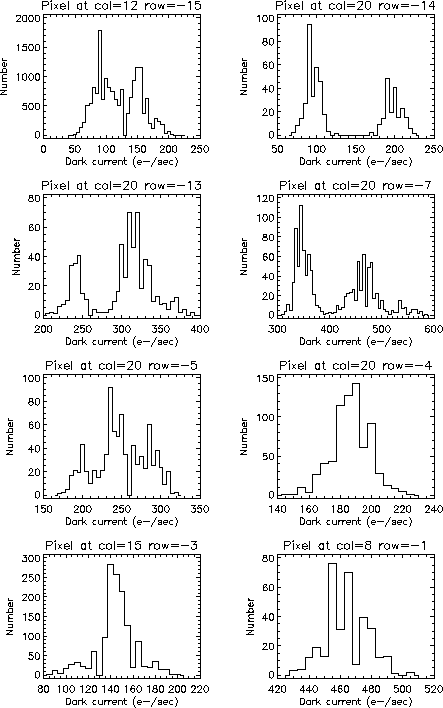

During analysis of the full-frame dark current calibrations, it has been observed that some warm pixels appear to "flicker" between different dark current values. Typically, a pixel would show one value for several readouts, followed by a very different value for the remaining readouts, where the change is inconsistent with counting or read noise. This behavior was seen both during the OAC (1999-Aug-11) dark calibration and the 2000-Nov-20 calibration. With dark calibration data it is possible to characterize the flickering of CCD pixels in a statistical sense. However, because of the small number of readouts (14 in OAC, and 5 in 2000-Nov), it is not clear what is happening for a particular pixel.
Fortunately, ACA data exist which contain a long time-series of data for a small number of pixels. These data come from observations with a monitor window in which the commanded location did not contain a star. Obsids 886 and 645 meet these requirements.
Obsid 886 is a long LETG observation in which the monitor window was commanded to track another guide star window. About 1/4 of the way through the observation the monitor window stopped moving, perhaps because the star in the designated track slot was momentarily lost. In any case, this is fortunate because there was a single warm pixel in the 8x8 window which was read out about 15000 times, giving a very good time history.
The plots below show the dark current versus time for 8 warm pixels found in obsid 886. Only the first one was visible during the long stationary period. The remaining seven are sampled sporadically as the dithering monitor window goes over the pixel. One can easily see the flickering nature of dark current in these pixels, wherein the dark current is essentially constant at a particular value for a period of time, and then does a discrete jump to a new value.


The plots below now show histograms of the dark current for each of the eight warm pixels. In some cases there appears to be a bimodal distribution, while in others (in particular the first warm pixel) there are many discrete values represented. Importantly, about 1/2 of the pixels show significant (> ~ 100 e-/sec) flickering.

The last set of plots below show similar histograms of dark current, but now for all pixels in a 4x6 region on the CCD. None of these pixels would be classified as warm. Many of these pixels also show distributions that are inconsistent with a single dark current value.

